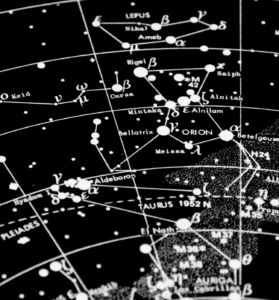The Book of Enoch is an ancient Jewish religious work that’s not included in the Bible. In fact, it’s considered canonical by the Eritrean Orthodox Tewahedo Church and the Ethiopian Orthodox Tewahedo Church.
That said, The Book of Enoch is a complex and fascinating work that has been studied by scholars for centuries. It’s a valuable source of information about Jewish and Christian beliefs about angels, the afterlife, and the end times.
In this intriguing post, you’ll learn 10 interesting facts about The Book of Enoch and possibly understand why it’s often used as inspiration for movies and video games.
1) Azazel Is Today’s Modern Lucifer

As portrayed in the Book of Enoch, Azazel’s role isn’t that of a heavenly deity, but rather the embodiment of impurity and ruin.
Azazel’s influence, akin to modern-day Lucifer, extends to the seduction of humanity. He’s depicted as a leader of rebellious hosts and a figure who imparted forbidden knowledge. This echoes the story of the Watchers, who descended to earth and defied the heavenly order.
While interpretations vary, Azazel’s role as the tempter and corrupter echoes the narratives of Lucifer and Satan. Azazel’s impact on human history, much like Lucifer’s, lies in the realm of temptation and the allurement of power and knowledge.
As you delve into these past texts, consider the parallels between Azazel and today’s concepts of fallen angels, demons, and the eternal struggle between purity and impurity.
2) God Imprisoned Angels in Heaven
The Book of Enoch is an ancient text that tells the story of how God imprisoned a group of angels called the Watchers.
These angels had come to Earth and had children with human women, which led to a lot of chaos and destruction. The archangels Michael, Sariel, Raphael, and Gabriel were sent by God to punish the Watchers and restore order to the world.
Asael was one of the Watchers who was particularly punished. He had taught humans forbidden knowledge, and so he was bound and cast into darkness.
He was also encased beneath jagged rocks, and his transformation from a golden angel to a suffering entity symbolized the forfeiture of his divine status.
The story of Asael’s fall from grace is a reminder that actions have consequences, even for celestial beings.
3) Enoch’s Heaven Is Different than the Bible’s
The Second Book of Enoch describes a universe with ten heavens, each with its own unique features and inhabitants.
The first heaven is where angels control the weather, the second heaven is a prison for rebel angels, the third heaven is both paradise and hell, the fourth heaven is the domain of the Sun and Moon.
The fifth heaven is where Enoch meets the Grigori, angelic beings who are at a crossroads between redemption and condemnation. The sixth heaven is where Enoch sees the archangels, who oversee everything from seasons to souls.
The seventh heaven is where Enoch approaches the Lord’s throne. The eighth heaven is ruled by Muzaloth, the constellation’s ruler. The ninth heaven is where the constellations are fixed, and the tenth heaven is where God’s throne resides.
Enoch’s depiction of the heavens is different from the biblical narrative, painting a portrait of a vast and complex universe full of wonder.
4) Enoch Mapped Out the Stars

In Chapter 33 of the Book of Enoch, Enoch claimed to have meticulously mapped and counted all the stars that adorn the night sky. It’s a mesmerizing idea, isn’t it?
However, a different voice echoes from the Bible. Jeremiah, in chapter 33, verse 22, asserts that the stars cannot be numbered. And it’s a claim grounded in scientific reality—there are simply too many stars scattered across the cosmos for us to accurately count.
Still, the Book of Astronomical Writings, offers a glimpse into Enoch’s celestial revelations, encompassing heavenly bodies’ movements and the vast expanse of the firmament. Guided by Uriel, Enoch unveils the cosmos in ways that expand our imagination.
5) The Book Mentions Noah
Noah was a descendant of Adam and Seth, and his father was Lamech. He was also the great-grandson of Enoch, who was taken up to heaven without dying.
In the book of Enoch, Noah’s birth and his story as well—which many found strange since Enoch was sent to heaven long before Noah walked the Earth.
Either way, the story of Noah in the Book of Enoch doesn’t change much from how the Bible recites it.
The book also claims that Noah was a man of great longevity. He lived to be 950 years old. This longevity is a mystery, but it may be a sign of God’s favor on Noah.
Noah played a significant role in the restoration of the gospel as well. He was the angel Gabriel, who announced the birth of John the Baptist and guided Mary in her divine mission.
6) Enoch’s Writings Aren’t Canonical
The book of Enoch, attributed to the ancient figure Enoch himself, is part of a group of writings known as the Pseudepigrapha. This work is thought to have been composed during the first or second century before the birth of Christ.
The intriguing narrative of Enoch’s writings has led some to question why his works are not included in the Bible. It’s important to note that the New Testament apostles and Jesus Himself never referred to the book of Enoch as Scripture.
The early church fathers, in compiling the New Testament, recognized certain books as divinely inspired and excluded others, including Enoch’s writings.
7) The Book Was Part of the Dead Sea Scrolls
The Dead Sea Scrolls are a collection of ancient manuscripts found near the Dead Sea in the mid-20th century.
These scrolls, made of parchment and papyrus, contain a range of texts, including parts of the Hebrew Bible, Jewish religious writings, and various other documents.
The presence of the Book of Enoch among the Dead Sea Scrolls signifies its significance in the thought and culture of that time. The Essenes, who held the book in high regard, saw in Enoch’s writings a source of spiritual insight and divine wisdom.
The fact that these ancient manuscripts include Enoch’s words highlights the impact and influence his writings had on specific communities within ancient Judaism.
8) The Nephilim Were Angel-Human Hybrids

According to the Book of Enoch, the Nephilim are the result of a profound blending of the angelic and human realms.
The term “Nephilim” comes from the Hebrew word “nephil,” which translates to “fallen ones.” In the Book of Enoch, these mysterious beings emerge as the offspring of angels (The Watchers whom we mentioned before) and human women.
These hybrid beings are portrayed as giants who wielded great power and influence, often contributing to the tumultuous events of the world.
The Nephilim aren’t explicitly mentioned in the canonical books of the Hebrew Bible, but their presence in extra-biblical texts like the Book of Enoch provides a glimpse into the diverse array of beliefs and stories circulating during those times.
9) Enoch Claimed the Earth Is Flat
The Book of Enoch is an ancient text that some people believe suggests a flat Earth.
However, it’s important to consider the context in which the text was written. The Book of Enoch was written during a time when there were many different cosmological models, and it’s possible that the descriptions of the Earth’s shape in the text aren’t meant to be taken literally.
The language used in the Book of Enoch is often symbolic and metaphorical, so it’s also possible that the descriptions of the Earth’s shape aren’t meant to be taken as scientific statements.
We now know that the Earth is a sphere, but people in the time of the Book of Enoch may not have had this knowledge.
10) The Book Was Fully Written in Ge’ez
Ge’ez, also known as Ethiopic, is an ancient Semitic language that has deep roots in the history of the Ethiopian region.
It served as a literary and liturgical language, employed for religious texts, legal documents, and cultural expressions. The Book of Enoch, being one of the most significant surviving early texts, found its home within the pages of the Ge’ez language.
As such, the translation of the Book of Enoch into English by R. H. Charles played a significant role in making this ancient text more accessible to modern readers.
Robert Henry Charles, commonly known as R. H. Charles, was a British biblical scholar and theologian who lived from 1855 to 1931. He was renowned for his expertise in apocryphal and pseudigraphal literature, and his translation of the Book of Enoch remains one of his most notable works.
Summary
The Book of Enoch is an ancient Jewish religious text that isn’t part of the Bible. It’s considered to be a pseudepigrapha, and it is divided into five parts.
The book contains information about the origins of evil, the afterlife, the end times, and the coming of the Messiah. It has been influential in Jewish and Christian thought for centuries.

